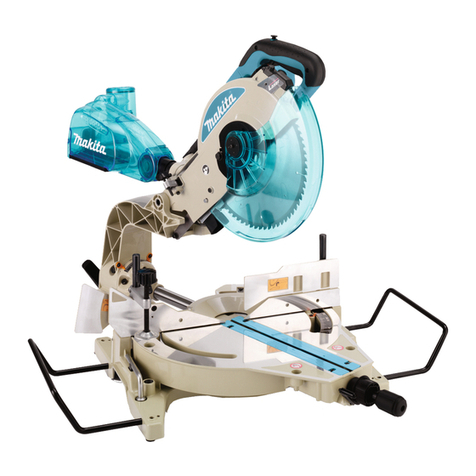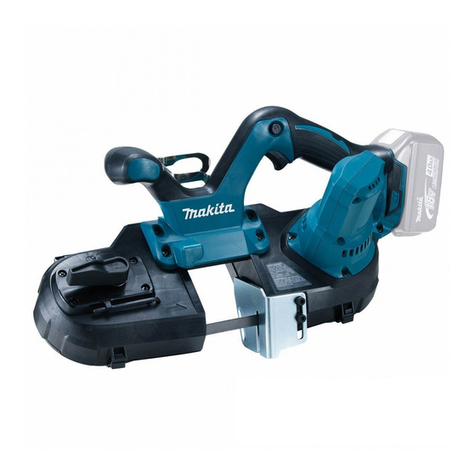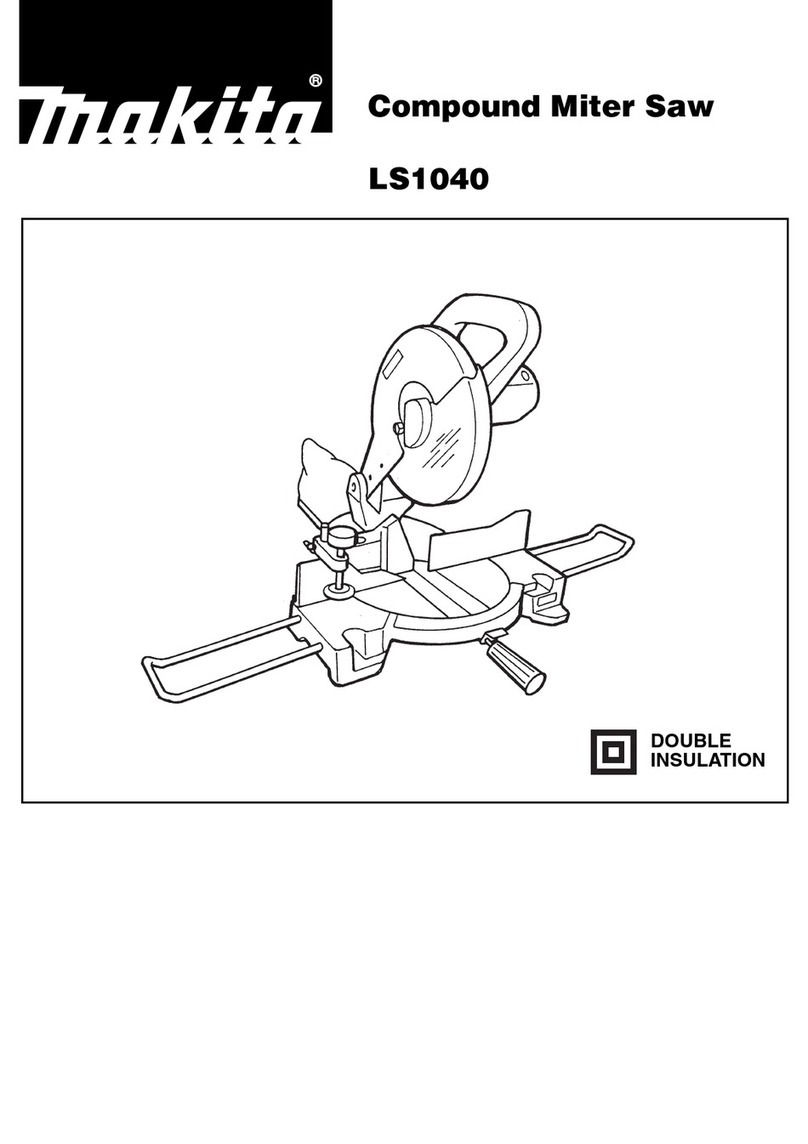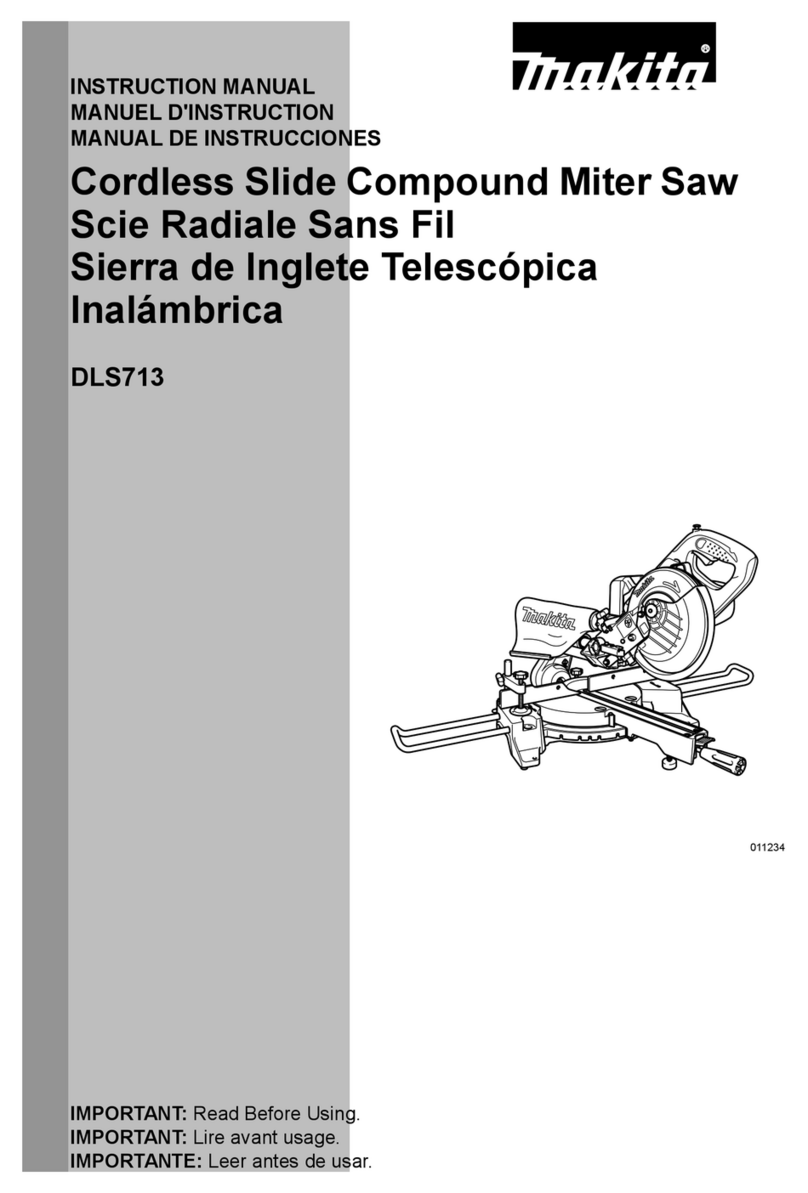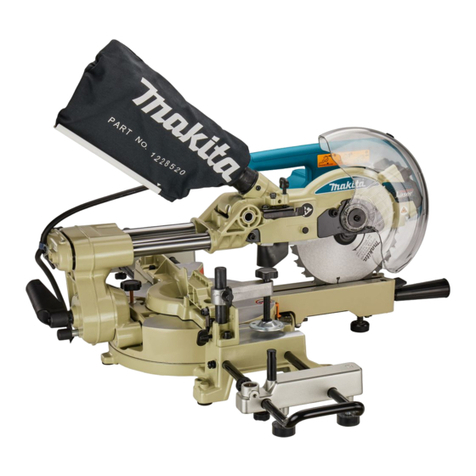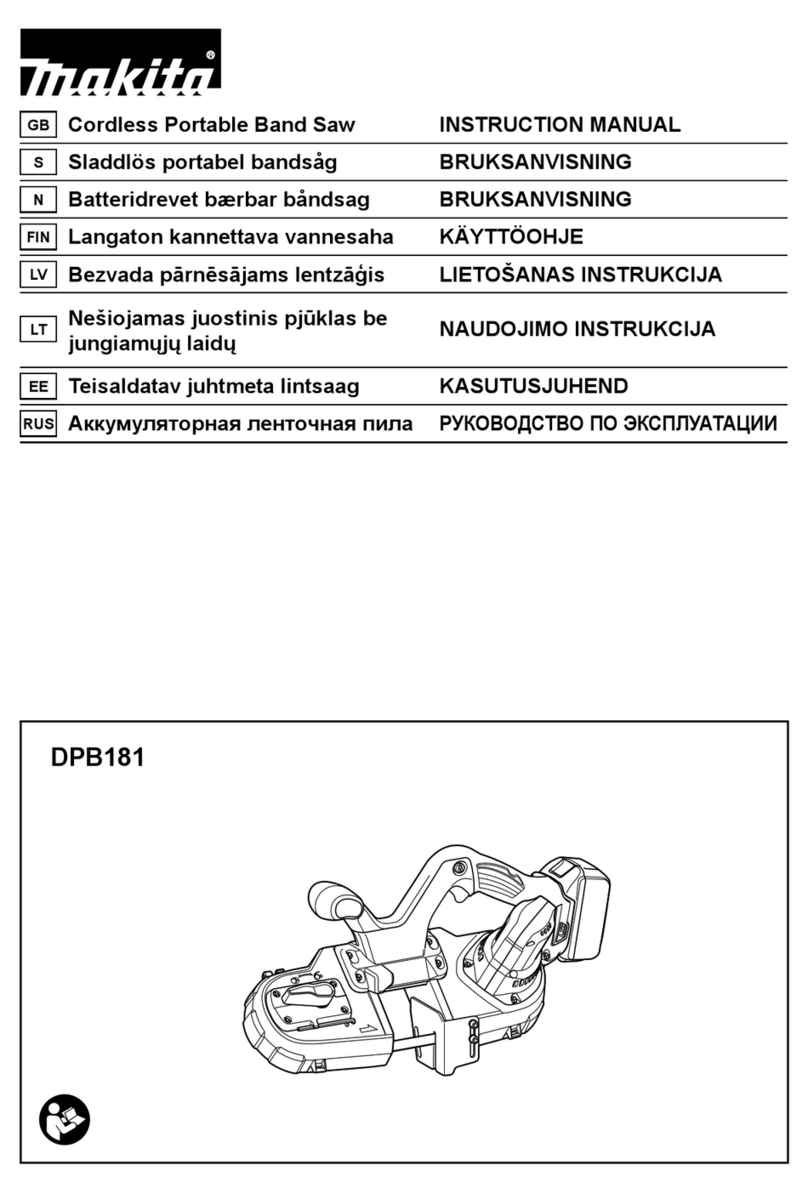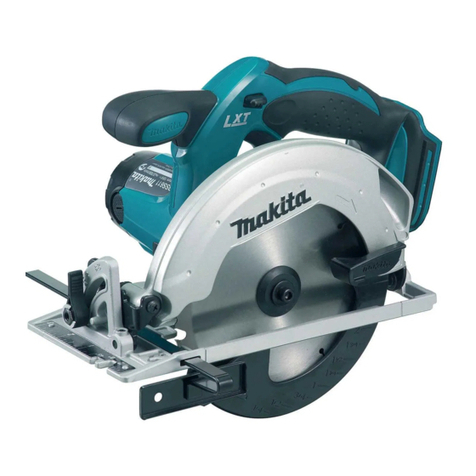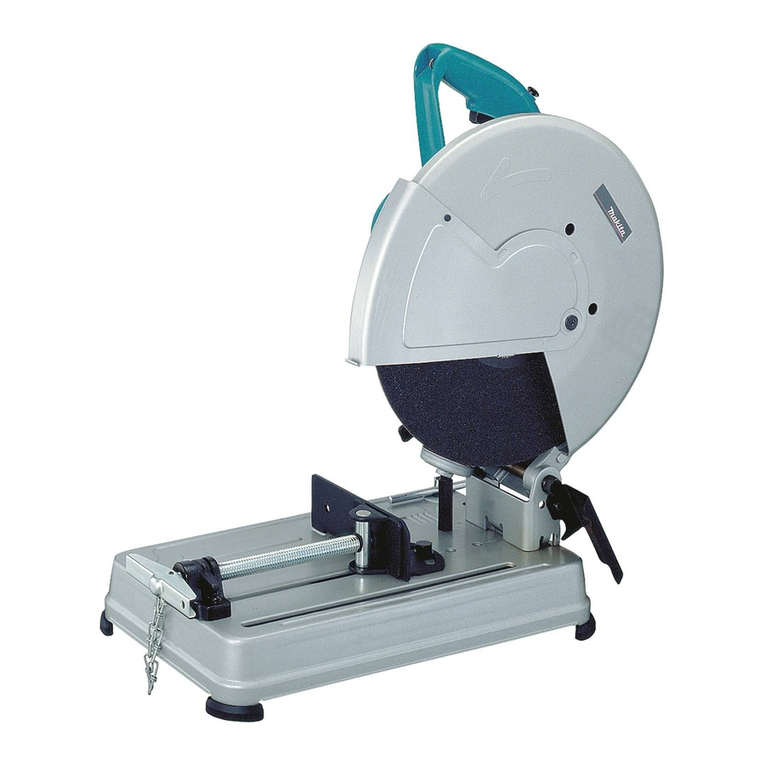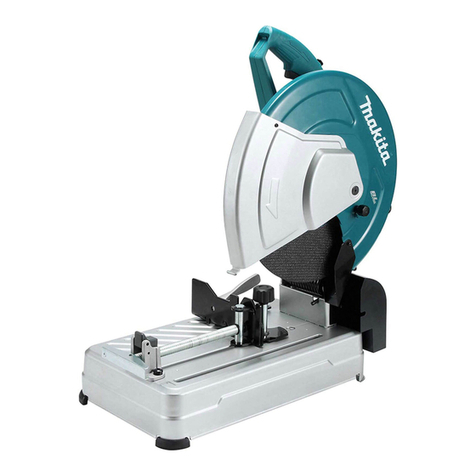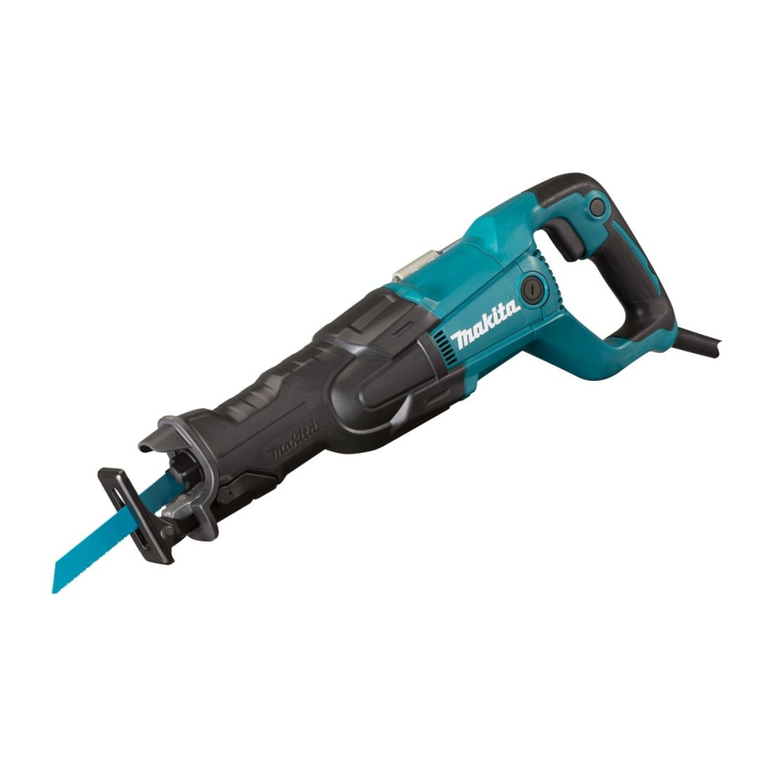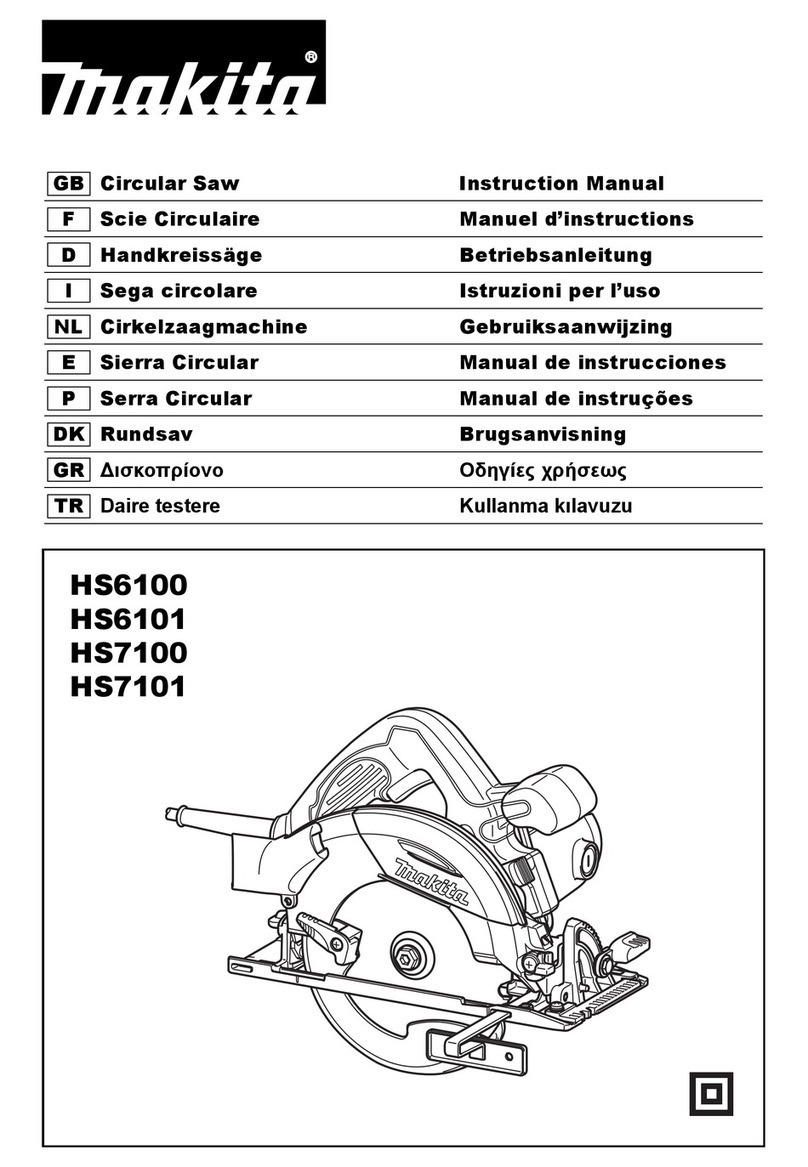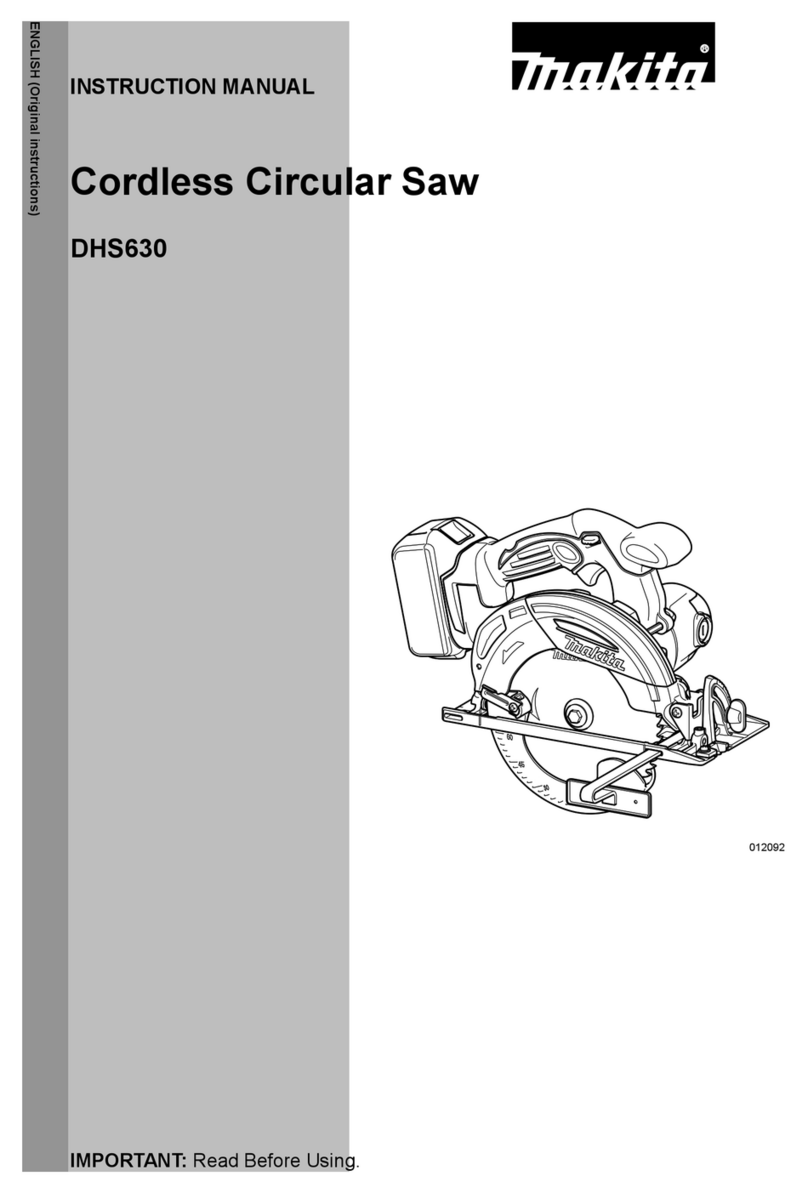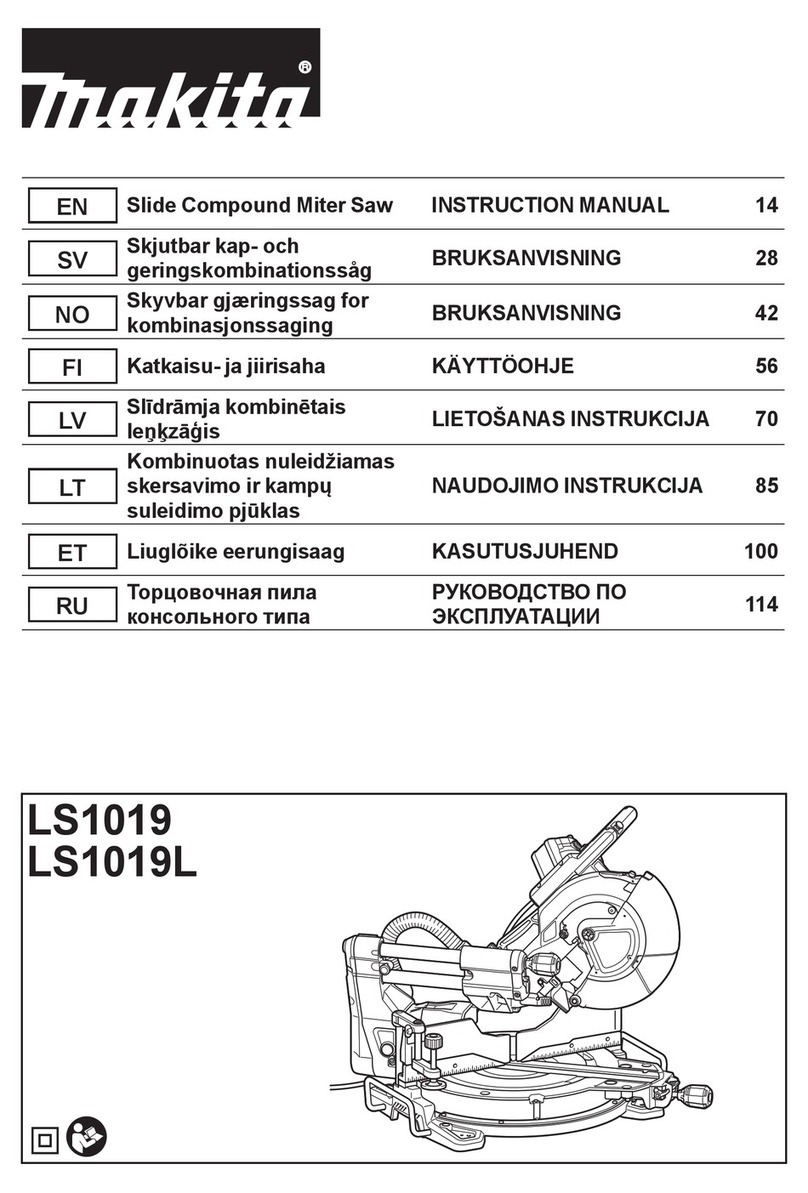
6
17. Keep hands out of the line of the saw blade.
18. NEVER stand or permit anyone else to stand
in line with the path of the saw blade.
19. Make sure the blade is not contacting the
riving knife or workpiece before the switch is
turned on.
20. Before using the tool on an actual workpiece,
let it run for a while. Watch for vibration or
wobbling that could indicate poor installation
or a poorly balanced blade.
21. The tool should not be used for slotting,
rabbeting or grooving.
22. Replace table insert when worn.
23. NEVER make any adjustments while tool is
running. Disconnect tool before making any
adjustments.
24. Use a push stick when required. Push sticks
MUST be used for ripping narrow workpieces
to keep your hands and fingers well away
from the blade.
25. Always store the push-stick when it is not in
use.
26. Pay particular attention to instructions for
reducing risk of KICKBACK. KICKBACK is a
sudden reaction to a pinched, bound or
misaligned saw blade. KICKBACK causes the
ejection of the workpiece from the tool back
towards the operator. KICKBACKS CAN LEAD
TO SERIOUS PERSONAL INJURY. Avoid
KICKBACKS by keeping the blade sharp, by
keeping the rip fence parallel to the blade, by
keeping the riving knife and blade guard in
place and operating properly, by not releasing
the workpiece until you have pushed it all the
way past the blade, and by not ripping a
workpiece that is twisted or warped or does
not have a straight edge to guide along the
fence.
27. Do not perform any operation freehand.
Freehand means using your hands to support
or guide the workpiece, in lieu of a rip fence
or miter gauge.
28. NEVER reach around or over saw blade.
NEVER reach for a workpiece until the saw
blade has completely stopped.
29. Avoid abrupt, fast feeding. Feed as slowly as
possible when cutting hard workpieces. Do
not bend or twist workpiece while feeding. If
you stall or jam the blade in the workpiece,
turn the tool off immediately. Unplug the tool.
Then clear the jam.
30. NEVER remove cut-off pieces near the blade
or touch the blade guard while the blade is
running.
31. Knock out any loose knots from workpiece
BEFORE beginning to cut.
32. Do not abuse cord. Never yank cord to
disconnect it from the receptacle. Keep cord
away from heat, oil, water and sharp edges.
33. Some dust created from operation contains
chemicals known to cause cancer, birth
defects or other reproductive harm. Some
examples of these chemicals are:
−lead from lead-based-painted material and,
−arsenic and chromium from chemically-
treated lumber.
−Your risk from these exposures varies,
depending on how often you do this type
of work. To reduce your exposure to
these chemicals: work in a well ventilated
area and work with approved safety
equipment, such as those dust masks
that are specially designed to filter out
microscopic particles.
34. When using the tool indoors, always connect
the tool to an external dust extraction system.
Switched on the dust extraction system
before starting the tool.
35. The guard can be lifted during workpiece
setup and for ease of cleaning. Always make
sure that guard hood is down and flat against
sawtable before plugging in the tool.
36. Wear gloves against the hazard of cutting
when handling saw blades, feeding wood into
the tool or doing maintenance.
37. Never try to remove chips while the saw blade
is running or the tool is switched on.
38. Never try to use the tool unless all guards and
other safety devices necessary for tool are in
good working order.
39. Operators must be adequately trained in the
assembly, adjustment and operation of the
tool.
40. Never use the blades which maximum speed
is lower than the no load speed of the tool.
41. Keep work area well lit.
SAVE THESE INSTRUCTIONS.
INSTALLATION
PREPARATION
Check contents of package for the following
components. Please inform Makita service center of any
part missing in the package immediately.
−Table saw (1 unit)
−Leg (4 pcs)
−Foot (4 pcs)
−Countersunk screw for foot (4 pcs)
−Hex nut for foot (4 pcs)
−Leg support (long) (2 pcs)
−Leg support (short) (2 pcs)
−Tire complete (1 pc)
−Dust nozzle (1 pc)
−Carrying handle (2 pcs)



